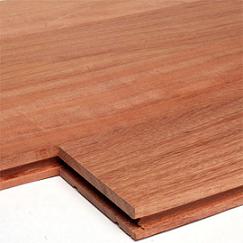
Learning how to install hardwood flooring is important for a long-lasting floor that won’t cause you problems. Your big question right now probably is do you do it yourself or bring in the professionals? There are many things to consider from the type of subflooring you have to how detailed you want your finished product to look. These things will determine the best installation method for your hardwood flooring project.
The Importance of Subflooring When Installing Hardwood Installing hardwood flooring can be a cinch, or it can be a nightmare, depending on the sub-floor you are working with and the pattern you want to create. It is crucial to consider your subflooring. Plywood sub-floors allow for any installation method, but if your sub-floors are concrete, other methods are advised.
Getting the Hardwood Flooring Look You Want While conventional straight line arrangement of your hardwood flooring is always a nice look, patterns for wood floor installations can be lots of fun. You could consider installing a herringbone hardwood flooring pattern, a diamond shape, or even weave a rug into your floor by using different colors of wood in a clever arrangement. As you can see, there are many ways you can create interest with your hardwood floor installation. Starting at a focal point such as a fireplace hearth, snapping a chalk line, and working out from there is one trick to getting the professional looking job you desire.
Three general methods for installing hardwood floors in your home: Floating: Floating is a very stable installation method since it’s not attached to the sub-floor. It floats above it, allowing for the natural expansion and contraction of the hardwood. This is an excellent do-it-yourself method and someone with little or no experience can get great results.
Gluing: This method is primarily used when installing an engineered strip or plank floor over a concrete sub-floor. Glue down installations can be very stable once properly installed. This method is recommended for those who have experience working with subfloor preparations, as it is critical that the subfloor be level. Also, be careful of fumes when working in an enclosed area. Nailing: Nail down installations are used when installing solid and engineered wood flooring. Solid wood flooring expands and contracts more than engineered and laminate flooring, so take care to acclimate the wood to your home’s interior before starting the installation. Nails should go through the face of the boards and should be long enough to penetrate the sub floor by at least 1 inch.
This method of hardwood flooring installation is not recommended as a do-it-yourself project. What to Consider When Choosing Your Hardwood Flooring Installation Method Installing hardwood on top of vinyl or linoleum flooring may not take any preparation, other than starting with a clean surface. Installing over concrete is possible with proper care. Installing hardwood flooring to carpet will often require a reducer strip to account for the different thicknesses. With the floating method, you will need to decide if you want an underlayment to help dampen noise.
With the glue down method you must ensure the subflooring is level and dry so that your flooring doesn’t warp. An underlayment can help insulate against cold temperatures. Finally, nail down and stapling, a variation of the nail down method, require precision integrating long and short pieces throughout the floor and applying spacers to the perimeter of the room to allow for expansion. This method also requires a great deal of skill and special flooring tools.
So now that you are aware of the options available, which installation method will you choose? Will you do it yourself or hire a professional? The choice is yours!





